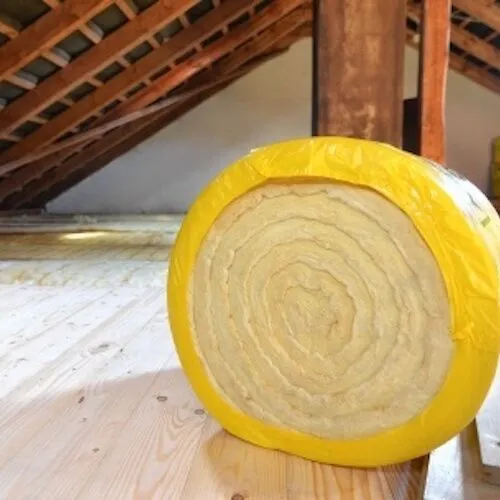
Protecting Your Home: Security Features and Safety Upgrades for Windows
Windows are often the most vulnerable entry points into a home, making security features that fortify them against intruders an important investment. While locks provide the first line of defense, additional reinforcements through laminated glass, window guards and monitoring devices can further enhance protection. Understanding modern window safety options allows homeowners to find the right balance of security, aesthetics and budget.
Reinforced Glass
Laminated glass is one of the most effective upgrades homeowners can make to strengthen window security and impact resistance. It consists of a tough plastic interlayer, typically polyvinyl butyral (PVB), sandwiched between two or more sheets of glass under heat and pressure. The lamination process makes the glass act as a single unified pane even when shattered, preventing dangerous fragmentation.
Compared to standard single pane or double pane insulated glass units which shatter into jagged shards when broken, laminated glass can withstand repeated forceful blows from intruders using bats, hammers, or other blunt objects. Even gun shots typically will not penetrate laminated glass, though bullets may cause significant damage. This prevents easy access for burglars while still maintaining opacity and privacy, unlike security grates or bars which are visually transparent.
Laminated glass also provides substantially increased windborne debris protection and impact resistance during severe storms, hurricane winds, or tornados. The strong interlayer absorbs and disperses the energy from projectiles like wood fragments better than basic glass which fractures easily under such impacts. This is a key factor along coastal regions in hurricane prone zones.
Laminated glass interlayers come in various thicknesses, with thicker PVB laminates offering the highest levels of intrusion and physical attack resistance. But even using the minimum 0.030 inch thick PVB laminate mandated for safety glazing provides as much as a 300-400% increase in strength over conventional annealed glass. Strategically protecting vulnerable lock areas and sliding door panels first is recommended.
Though insulated glass or tempered glass provide important energy savings and safety, adding laminate layers are the only way to achieve full forced entry protection. The investment into laminated window panes, even if only partial, pays dividends in security and peace of mind for years to come.
Window Guards and Bars
Installing window guards or iron security bars provides an overt physical barrier against forced entry by preventing windows from opening more than a few inches, even if smashed in. Steel bars securely anchored into the window frames using tamper-resistant hardware can withstand prying or levering pressure applied by intruders. Properly spaced steel bar grates less than 5 inches apart also prevent access between the bars.
Quick-release mechanisms are incorporated into bar installations that allow the grates to be rapidly opened in case of fire or other emergency egress needs. However, routine testing and maintenance must be done to keep these release systems functional and prevent rust/corrosion build up.
Compared to transparent laminated glass, metal bars evoke a stronger physical presence and utilitarian look which may not blend with certain architectural aesthetics. But ornamental bar designs, custom forging, and thoughtful placement only on side/rear windows helps maintain facade appearances for many homes while still providing security. Window bars sized and styled appropriately can be integrated into many exterior styles.
Along with security against intruders, window guards also help prevent accidental falls by children from upper story windows. This makes them ideal in homes with kids. However, release mechanisms should be clearly marked and accessible so children can still exit in case of fire. The visibility of bars can also deter some criminals from targeting homes.
Taking the time to properly install window bars deeply anchored into masonry or wood window frames provides reliable protection that prevents forceful opening. They serve as an overt yet effective crime deterrent for vulnerable window areas, especially when used in combination with laminated glass.
Window Locks and Sensors
Adequate window locks should form the first line of defense against intruders rather than relying solely on after-market guards or laminates. High security keyed locks integrated into the window hardware itself provide better protection than simple latches which can be easily compromised. Multi-point lock systems engaging at least two points along the window sash are recommended over single deadbolt locks which can be levered open.
At minimum, all accessible windows on ground floors or basements should have sturdy integrated locking mechanisms as the initial physical and visual deterrent. Secondary latches that engage when the primary lock is activated provide another layer of protection. Installing high-security keyed locks is also advised for any windows that are accessible from porches, patios, decks or low rooflines.
In addition to physical window locks, installing security sensors that detect vibration, motion or glass breakage provide active monitoring and alerts to unauthorized entry attempts. Sensors triggered by vibration can identify early tampering before glass is broken. Acoustic sensors recognize the specific sound frequencies of shattering glass. Both work by triggering audible on-site alarms and instant notifications to homeowner phones or professional monitoring services.
Advanced signal processing in sensors filters out false alarms from ambient noise or environmental factors like storms. Integrating window sensors into broader home security systems allows even smarter threat detection and response capabilities.
Taking a layered approach with solid physical locks as the first line of resistance combined with active monitoring through window sensors provides robust protection through redundancy. Securing accessible windows should be the priority to deter and detect opportunistic intruders.
Monitoring and Lighting
Beyond physical security measures on windows themselves, installing monitoring systems and strategic lighting around the home provides additional layers of protection.
Outdoor security lighting eliminates dark shadows and increases visibility around window exteriors at night. This reduces criminal opportunity. Motion activated floodlights situated specifically around window perimeters will suddenly alert homeowners and deter potential burglars approaching at night. Infrared capable cameras can also work in conjunction with motion lighting systems.
Installing security cameras with overlapping fields of view covering all exterior window areas allows 24/7 video monitoring capability. Positioning cameras high up tucked under eaves or on second floors makes them difficult for intruders to tamper with or disable.
High resolution recording capability is critical for capturing identifiable details, especially after dark. Signage advertising active surveillance systems also acts as a deterrent. Storage capabilities for on-site recording footage for at least 7-10 days is recommended in case review is needed following an incident.
For best coverage, cameras integrated with home automation systems allow remote monitoring and control via smart devices. This also enables smartest use of connectivity and power.
Professional installation with strategic camera placements, lighting designed to eliminate dark spots near windows, and integration with broader home monitoring systems creates proactive threat visibility.
Having both physical security measures on windows as well as smart monitored deterrence focused on window exteriors provides full premises protection. High-resolution recordings also provide critical evidence to law enforcement in case a burglary still occurs despite defenses. Lighting and cameras covering windows should be part of any comprehensive home security strategy.
Final Considerations
The most effective window security comes from layering multiple reinforcements that complement each other. Upgraded laminated glass, high-strength locks, rigid barriers, and active monitoring together make windows highly resistant to intrusions without compromising aesthetics or natural light.
Newer window products come with built-in security features like laminated glazing, structurally reinforced frames, and multi-point lock designs that provide substantial safety right from initial installation. Retrofitting older windows through assessments by security professionals ensures vulnerabilities are addressed.
Seeking home security consultations offered by many local police departments can provide expert guidance on assessing and addressing window risks in your specific property. These crime prevention specialists can identity danger points and make upgrade recommendations tailored to your situation and budget.
Investing in recommended window security upgrades such as high-security locks, laminated glaze replacements, or bars on risky basement windows provides benefits that far exceed the cost. Property and personal safety cannot be measured in dollars alone.
Incorporating smart design features into new window installations such as positioned high above ground, limiting opening size, and using obscured or reflective glazing can also avoid easy access and visibility from outside.
A combination of visual deterrents like security signage and bars, physical reinforcements on the windows themselves, and active monitoring through alarms and cameras provides overlapping security layers for optimal protection, safety, and peace of mind. Windows should always be a priority area to secure.
References:
- https://resources.infosecinstitute.com/topics/operating-system-security/windows-10-security-features/
- https://www.microsoft.com/en-us/security/blog/2022/04/05/new-security-features-for-windows-11-will-help-protect-hybrid-work/


